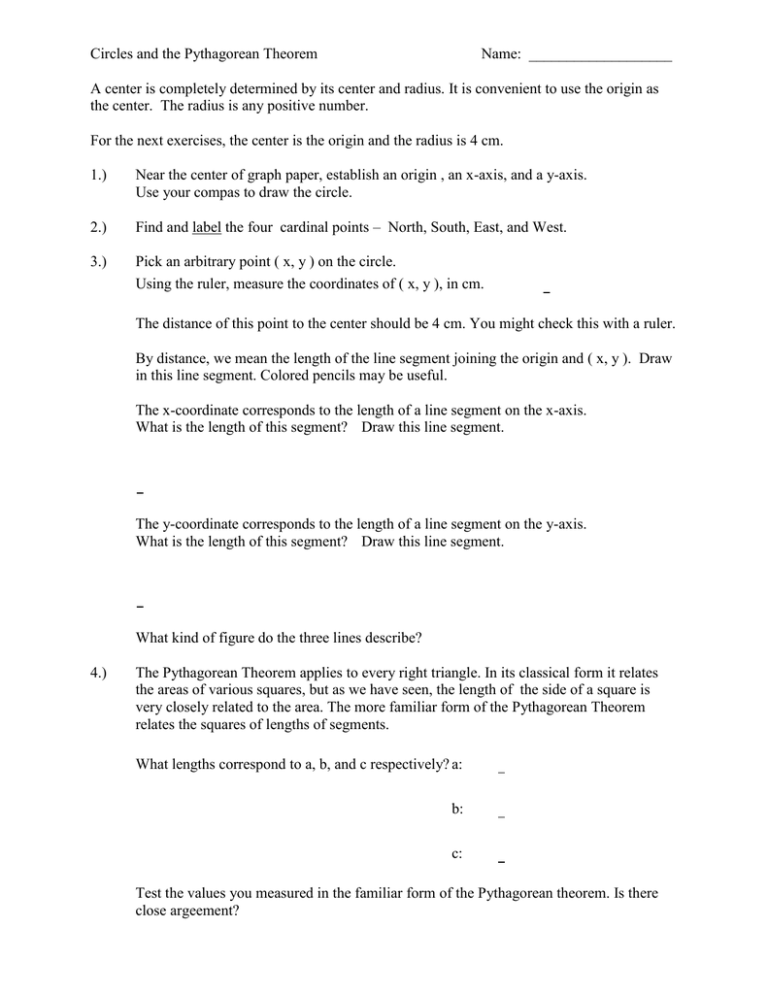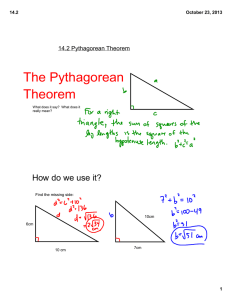Circles and the Pythagorean Theorem Name: ___________________
advertisement

Circles and the Pythagorean Theorem Name: ___________________ A center is completely determined by its center and radius. It is convenient to use the origin as the center. The radius is any positive number. For the next exercises, the center is the origin and the radius is 4 cm. 1.) Near the center of graph paper, establish an origin , an x-axis, and a y-axis. Use your compas to draw the circle. 2.) Find and label the four cardinal points – North, South, East, and West. 3.) Pick an arbitrary point ( x, y ) on the circle. Using the ruler, measure the coordinates of ( x, y ), in cm. The distance of this point to the center should be 4 cm. You might check this with a ruler. By distance, we mean the length of the line segment joining the origin and ( x, y ). Draw in this line segment. Colored pencils may be useful. The x-coordinate corresponds to the length of a line segment on the x-axis. What is the length of this segment? Draw this line segment. The y-coordinate corresponds to the length of a line segment on the y-axis. What is the length of this segment? Draw this line segment. What kind of figure do the three lines describe? 4.) The Pythagorean Theorem applies to every right triangle. In its classical form it relates the areas of various squares, but as we have seen, the length of the side of a square is very closely related to the area. The more familiar form of the Pythagorean Theorem relates the squares of lengths of segments. What lengths correspond to a, b, and c respectively? a: b: c: Test the values you measured in the familiar form of the Pythagorean theorem. Is there close argeement?


